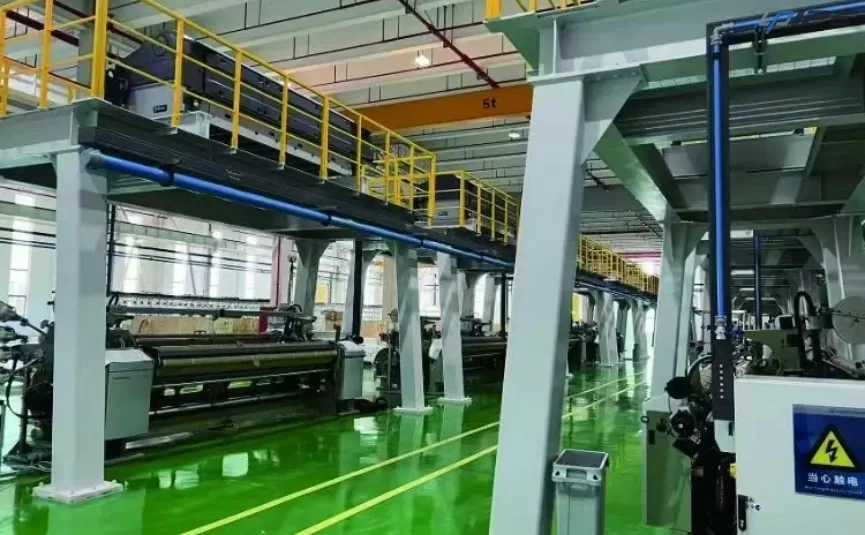UPIPE, as a high quality aluminum air pipe manufacturing factory, will share the industrial applications of blue aluminum compressed air pipe for sale.
Learn more
Compressed air is often called the "fourth utility" in manufacturing, alongside electricity, water, and natural gas. An efficient compressed air distribution system is crucial for ensuring smooth production, minimizing downtime, and optimizing energy costs. In this blog post, UPIPE, as a high quality aluminum air line pipe manufacturer, will share the importance of aluminum air line system in manufacturing industry. Its unique properties make it an ideal choice for high-performance, long-life and low-maintenance air distribution network.
An aluminum air line system refers to a network of pipes, fittings, and connectors made primarily from high-grade aluminum alloys. These systems are designed to transport compressed air from the generation source—such as compressors—to various points of use across the factory floor.
Unlike traditional steel or copper piping, aluminum systems are lightweight, corrosion-resistant, and quick to install, offering both operational and economic benefits. Their modular nature allows for easy system expansion and reconfiguration, making them a future-proof choice for industries that prioritize flexibility.
Corrosion is one of the most common causes of air line system degradation. In steel pipes, moisture in compressed air leads to rust formation, which can contaminate the air supply and damage downstream equipment. Aluminum, however, naturally forms a thin oxide layer that prevents corrosion, ensuring clean, dry, and contaminant-free air delivery over decades of use.
Aluminum piping is significantly lighter than steel, reducing the effort and time needed for installation. This allows smaller crews to install or modify the system with minimal lifting equipment, reducing labor costs and downtime.
The internal surface of aluminum pipes is exceptionally smooth, minimizing friction loss during air flow. This results in higher system efficiency, reduced pressure drop, and lower energy consumption. In contrast, steel pipes develop internal scaling over time, which increases resistance and reduces performance.
Modern aluminum air line systems are designed with quick-connect fittings, enabling rapid assembly and disassembly without welding, threading, or special tools. This modularity is especially valuable for manufacturing environments where production layouts change frequently.
Because aluminum resists corrosion and retains its smooth internal finish, it can operate efficiently for decades with minimal maintenance, resulting in a lower total cost of ownership compared to traditional piping materials.

Many manufacturing processes—such as CNC machining, painting, packaging, and assembly—depend on a steady supply of clean compressed air. Contaminants like rust, oil, and moisture can compromise product quality and damage sensitive pneumatic tools. Aluminum' s corrosion resistance ensures that compressed air remains clean and safe for use.
Energy costs can account for up to 70% of the total cost of operating a compressed air system. By reducing pressure drops and eliminating leaks, aluminum piping improves overall energy efficiency. This helps manufacturers meet sustainability goals and reduce operational expenses.
Automation systems, robotic arms, and high-speed pneumatic actuators require stable and consistent air pressure. The smooth, leak-free nature of aluminum piping ensures that these systems operate at optimal performance, reducing errors and maintaining production quality.
In industries such as automotive, electronics, and food processing, production lines may be reconfigured to accommodate new product models or technologies. The modular nature of aluminum air line systems allows for quick adjustments, minimizing downtime and improving operational agility.
Feature | Aluminum | Galvanized Steel | Copper |
Weight | Very light | Heavy | Moderate |
Corrosion Resistance | Excellent | Poor (rust) | Good |
Installation Time | Fast (modular) | Slow (threading/welding) | Moderate (soldering) |
Internal Smoothness | Excellent, no scaling | Poor over time | Good |
Maintenance | Low | High | Moderate |
Cost (Long-Term) | Low | High | Moderate |
From this comparison, it is clear that aluminum provides a balanced solution in terms of performance, maintenance, and total cost of ownership.
Even with superior material properties, proper installation is critical for achieving the full benefits of an aluminum air line system.
* Plan for Future Expansion: Design the layout to accommodate potential changes in production lines.
* Use Quality Fittings: Ensure compatibility between pipes and connectors to prevent leaks.
* Proper Support and Anchoring: Use recommended brackets and hangers to maintain system integrity and avoid stress on joints.
* Moisture Management: Integrate filters and dryers to keep compressed air clean and dry, extending equipment lifespan.
* Regular Leak Checks: Even with aluminum' s leak resistance, periodic inspections are essential to maintain peak efficiency.
Aluminum air line systems are used across a wide range of industries due to their adaptability and reliability:
* Automotive Manufacturing: For powering pneumatic tools, painting systems, and assembly lines.
* Electronics Production: Where clean, dry air is crucial for sensitive components.
* Food and Beverage Processing: Meets hygiene and contamination control requirements.
* Textile Industry: For operating weaving machines and looms efficiently.
* Metalworking: Supports CNC machines, grinders, and cutting tools with stable air supply.
Sustainability is becoming a key focus in manufacturing. Aluminum air line systems contribute positively in several ways:
* Energy Savings: Lower pressure drops mean compressors run less often, reducing electricity consumption.
* Recyclability: Aluminum is 100% recyclable without loss of quality, reducing waste and environmental footprint.
* Reduced Maintenance Waste: Fewer repairs and replacements mean less material consumption over the system' s lifetime.
In the competitive landscape of modern manufacturing, efficiency, reliability, and adaptability are critical to success. Aluminum air line systems provide a future-proof, cost-effective, and environmentally responsible solution for compressed air distribution. By combining corrosion resistance, ease of installation, energy efficiency, and modular flexibility, they address the operational demands of diverse industries while supporting long-term growth and sustainability.